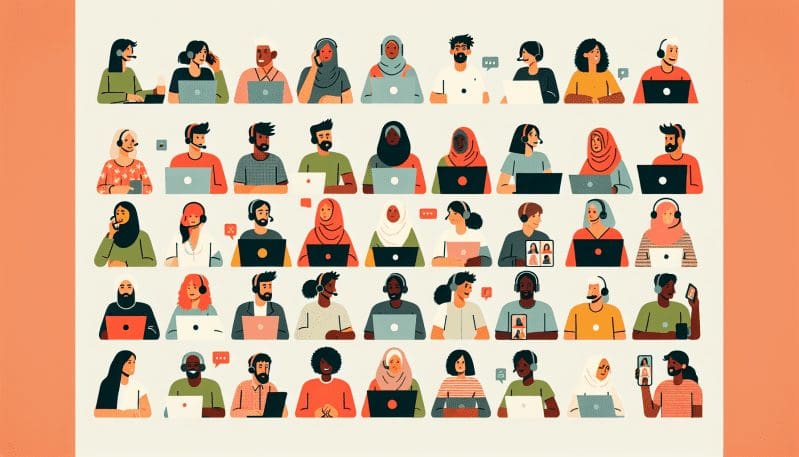Cultivating Inclusive Telecommuting: Breaking the Virtual Glass Ceiling During Diversity Month
- Home
- Cultivating Inclusive Telecommuting: Breaking the Virtual Glass Ceiling During Diversity Month
- Editors Desk
- April 4, 2024
- 0 Comments
As Diversity Month unfolds, we stand on the cusp of a watershed moment for inclusivity in the workplace. While telecommuting has shattered geographical barriers, it’s imperative to recognize that a ‘virtual glass ceiling’ remains intact for many individuals. The shift to remote work has been lauded for its flexibility and broader employment opportunities, yet it is crucial to confront the less-visible divides that continue to permeate this mode of working. At No Worker Left Behind, we are dedicated to ensuring that the future of work is not only remote but also fair and inclusive for all.
Accessibility is one of the foremost barriers for differently-abled workers in remote settings. The digital workspace, although free from physical constraints, often lacks the necessary tools and adjustments that cater to a wide range of disabilities. From screen readers that may not integrate seamlessly with all collaborative platforms to video conferencing software without real-time captioning, these oversights can create a work environment that is inadvertently exclusionary.
Furthermore, the ongoing digital divide poses a significant hurdle, particularly for marginalized communities. Inadequate access to high-speed internet and contemporary computing devices can severely limit the ability to compete on a level playing field. For some, telecommuting remains a mirage, accessible in theory but unattainable in reality, due to systemic disparities in technology availability and digital literacy.
Another pressing concern is the ‘out of sight, out of mind’ syndrome, which may isolate remote workers from opportunities for advancement and professional development. Minorities and those from underrepresented backgrounds might find themselves inadvertently excluded from key networks and conversations that propel careers forward, widening the professional chasm between them and their more visible counterparts.
Despite these challenges, telecommuting also presents a unique opportunity to build more inclusive teams. Virtual team-building exercises and intentional communication strategies can bridge the gap between diverse team members, fostering a sense of belonging and collaboration. Cultural competence training and regular check-ins can ensure all voices are heard and valued, irrespective of their physical location.
AI and machine learning tools offer a paradoxical position in the drive towards unbiased work environments. While they hold the promise of eradicating unconscious bias through objective decision-making processes, there’s also the risk that these algorithms perpetuate existing prejudices if not carefully designed and continually audited.
There’s a pressing need for bold initiatives to democratize remote work. No Worker Left Behind believes in the power of community-driven approaches, like mentorship programs that connect experienced remote workers with those new to the field, ensuring knowledge transfer and the cultivation of best practices. Moreover, advocating for universal access to technology and robust digital training programs can gradually close the gap that the digital divide has wrought.
During Diversity Month, let’s ignite a dialogue and strive for actionable change. It’s not enough to merely acknowledge the barriers faced by many in the telecommuting workforce; we must actively dismantle them. By investing in inclusive technology, policies, and practices, we can transform telecommuting into a truly equitable frontier for all workers.
No Worker Left Behind is at the forefront of this movement, championing a telecommuting revolution that empowers every worker, regardless of their background or circumstances, to soar without limits. Let’s use this Diversity Month to catalyze a pivotal shift in the telecommuting landscape, forging a future where the virtual glass ceiling is nothing more than a relic of the past.


Leave A Comment